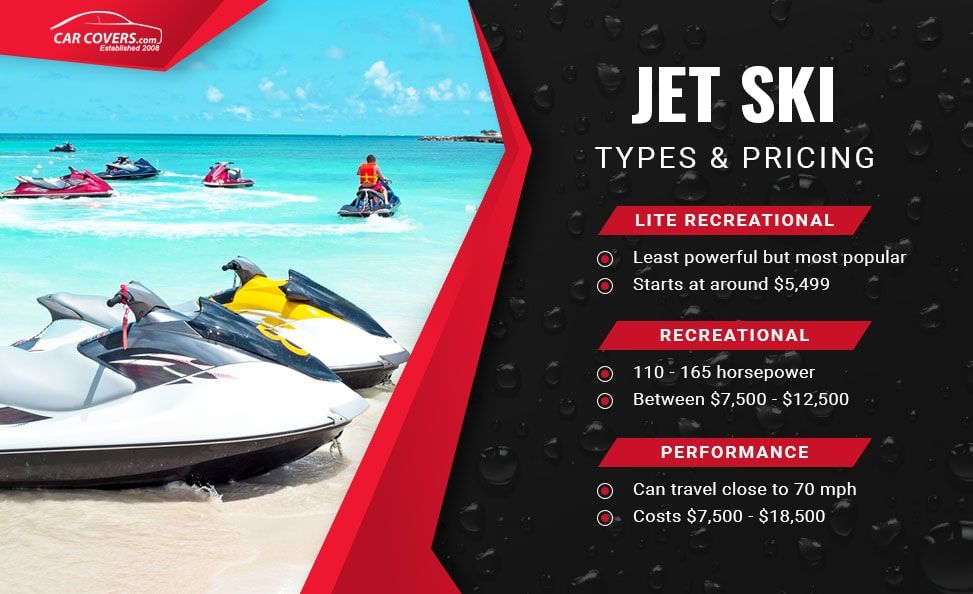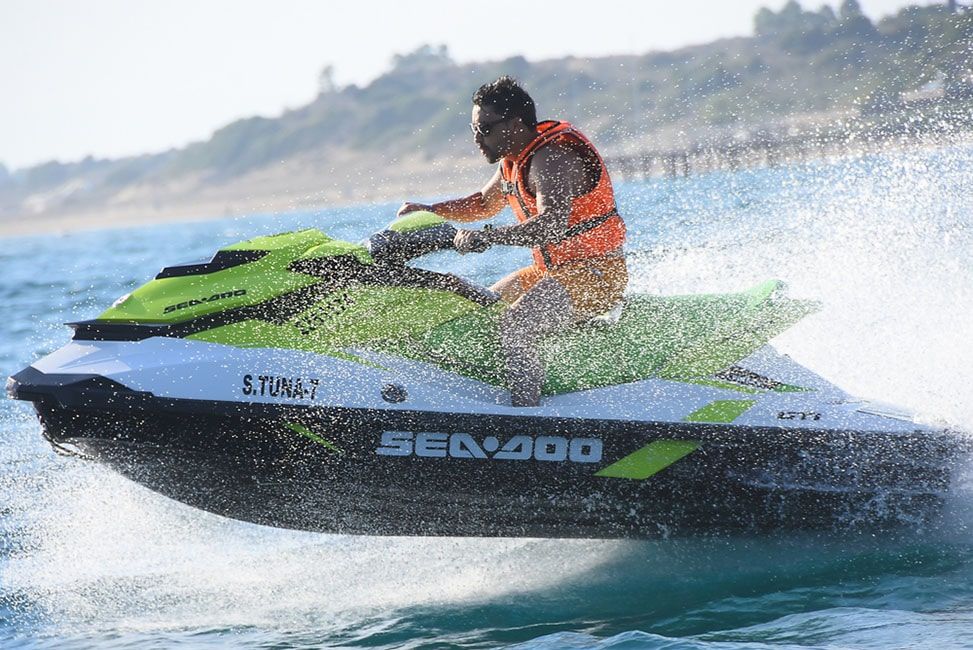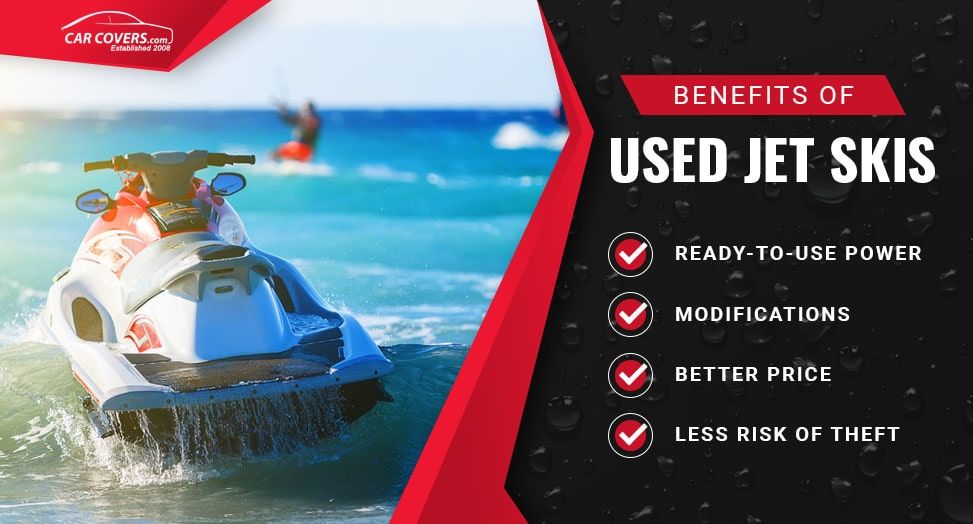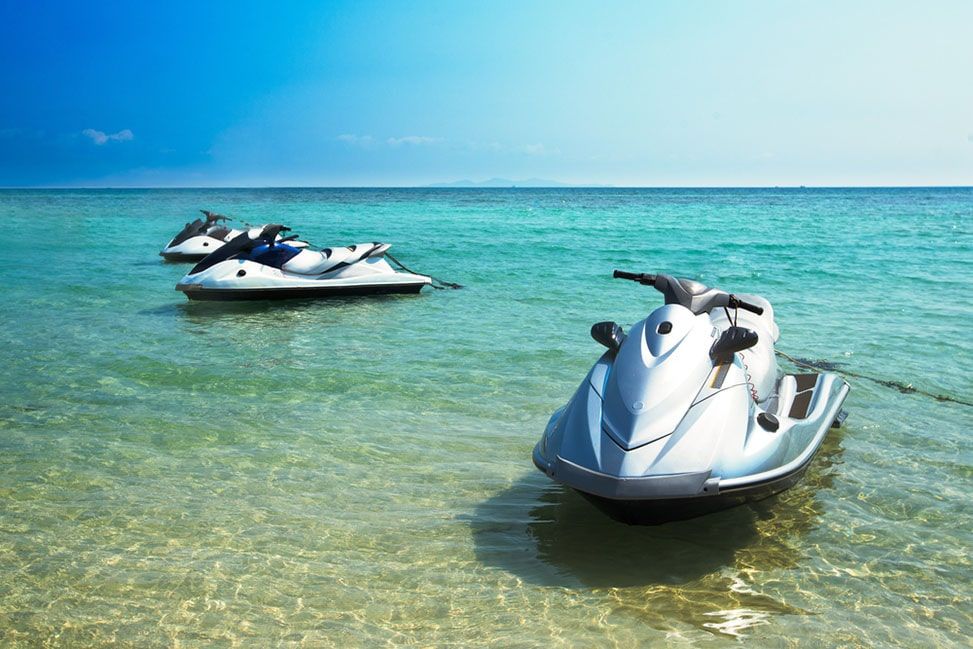
How Much Is a Jet Ski? Initial Costs, Maintenance & More
Riding a jet ski is one of the most exciting ways to travel across the water. Whether you’re an expert or a first-time rider, the combination of water, sun, fresh air, and speed make for an exhilarating summer activity. Despite their popularity, jet skis don’t come cheap, particularly when you consider additional long-term costs like maintenance, repairs, and replacement parts. As a water-based vehicle, components can be damaged or worn quite easily. A lack of maintenance or protective coverings can also contribute to damage, increasing ownership costs.
So, how much is a jet ski? Depending on what type of jet ski you want, the initial costs can vary significantly. The cheapest jet skis on the market typically cost around $5,000, while the more expensive options come in around $20,000. They also depreciate quickly, losing approximately 22% of their value after one year and around 8% each subsequent year.
Types of Jet Skis
There are several different types of jet skis. From high-performance, powerful sports vehicles to more recreational-style jet skis, the price varies depending on what type of vehicle you purchase. Luxury jet skis are generally the most expensive type of personal watercraft (PWC), with the recreation or lite recreational vehicles being the cheapest.
• Lite Recreational
Lite recreational jet skis are some of the least powerful but most popular PWCs on the market. They have the least amount of features and smaller engines than other types of jet skis, but they’re affordable and are capable of wave running and performing wheelies and low-impact jumps. Lite recreational PWCs are most popular among beginners, families, and tow sports such as wakeboarding, kneeboarding, and tubing.
These PWCs tend to have their greatest difficulties in rough waters, as the engines lack the power to overcome large waves and strong currents. So, they work best on flat water, such as lakes and rivers. The first lite recreational models were quite small, light, and capable of being used for tricks and launching out of the water. They have since developed into larger vehicles for more comfortable driving and to better enable them for towing. The popularity of the original lightweight PWCs led brands such as Sea Doo to recreate the original style of jet skis.
The Sea Doo Spark is a lightweight PWC with excellent fuel efficiency. It is a throwback to the earlier designs with its playful and sporty feel. Starting at around $5,499, the low price point means this model is extremely popular. Although lite recreational PWCs can be improved in power, engine size, and features, many owners prefer to stick with these models. As a popular option for first-time owners, many riders fall in love with the smooth and fun style of a lite recreational jet ski.

• Recreational
A recreational jet ski is a step up from a lite recreational model in terms of size, power, and overall comfort. Although it isn’t as big or powerful as some other PWCs, it packs more punch than the most basic jet skis, and it has more technological features. The maximum speed of recreational jet skis varies, but most can travel at least 50 mph. The horsepower is somewhere between 110 and 165, which is plenty of power for most users.
Most jet skis don’t have brakes. They’re slowed by easing up on the throttle and going into reverse. However, certain models of recreational PWCs, such as the Sea Doo GTIs, the Yamaha VXs, and the Kawasaki STX 15, are available with brakes, making parking, docking, and loading the jet ski onto a trailer much easier. Recreational jet skis are suitable for those looking for a fast weekend PWC that won’t break the bank. They are designed for beginners and first-time riders and are generally quite easy to maneuver and control. Although they don’t stand out in any particular category, they are good overall performers. Depending on the make and model of jet ski you buy, the price will differ. They are usually available for between $7,500 and $12,500.
Help Maintain Your Jet Ski with a Quality Cover
• Performance
Performance jet skis are built for speed. They are designed to outperform all other PWCs in races. Like sports cars and other performance vehicles, these jet skis command high price tags. While the features and performance statistics are much greater than lite rec and other recreational vehicles, many jet ski riders don’t need this level of performance.
As well as boasting faster speeds and better acceleration, performance jet skis are much more agile than other types. They are perfect for experienced and skilled riders who enjoy hitting high speeds on the water. In the U.S., the fastest jet skis on the market can travel close to 70 mph. They are electronically limited to prevent serious injuries. But, with the limiters removed, performance jet skis can reach speeds of up to 90 mph. For the speed freaks, jet skis can be adjusted and enhanced to increase acceleration and maximum speeds.
Performance jet skis generally contain premium supercharged engines, which increases the price tag significantly. What’s more, replacement parts and upgrades are also more expensive, increasing the overall costs in the long term. A new performance jet ski can cost anywhere from $7,500 to $18,500. The Kawasaki Ultra 310R is a popular performance vehicle that costs around $16,500.

• Luxury
Luxury jet skis boast some of the best acceleration, speed, and features of all jet skis on the market. They have similar engines to performance jet skis, allowing them to hit extremely high speeds and accelerate quickly. However, they are built with comfort and performance in mind, so they tend to be heavier, a little slower, and less agile than the sportier performance models. The main selling point with a luxury jet ski is the additional features. Many luxury jet skis come with some useful features as standard. Some of the standard features of a premium jet ski include cruise control, adjustable steering, a large boarding aft, comfortable seating, a built-in stereo system, and several pillions.
Although these features aren’t necessary for everyone, they can be worthwhile for those who use their jet ski a lot. Unsurprisingly, luxury jet skis don’t come cheap. They are the most expensive type of PWC due to the high-performance engines and extra features. They typically start at around $12,500 and can cost up to $18,000.
New vs. Used Jet Skis
There are several advantages to using both new and used jet skis. The condition that the jet ski is kept in and the quality of the engine parts have a big influence on its performance. The average jet ski rider clocks around 30 hours per year on their vehicle, so you can approximate that a 5-year-old vehicle has 150 hours of life behind it, and a 10-year-old ski has 300 hours of engine life. Jet skis typically come in either 2-stroke or 4-stroke engines. Two strokes are being phased out due to the amount of pollution they cause. As there are fewer 2-stroke engines in circulation anymore, the replacement parts are more difficult to source, making repairs more expensive. Whether you’re buying new or second-hand, 4-stroke jet skis are more suitable for modern riders. Although 2 strokes are no longer very popular, they can be useful to break down for parts.

Benefits of a New Jet Ski
Some of the main benefits of buying a new jet ski include:
• Increased power:
Newer vehicles are getting better every year. With improved engineering comes more powerful engines. Since they are fresh out of the factory, the power hasn’t been tapped out of the engine yet. However, these engines need to be run several times before they reach their peak performance.
• Warranty:
Brand new jet skis come with a warranty (often between two to five years) from the manufacturer. This isn’t available when buying second-hand.
• Upgrades and modifications:
You can customize or modify certain jet ski models right out of the factory. Although you can modify second-hand PWCs, this may go against the warranty if your jet ski came with one. If any of the upgrades end up damaging the vehicle, you may not be covered.

Benefits of Used Jet Skis
There are also some significant advantages to buying a used jet ski:
• Ready-to-use power:
Unless they come with existing problems, second-hand jet skis are ready to go immediately, meaning you don’t have to worry about breaking them in.
• Can modify without compromising a warranty:
Unless your used jet ski is relatively new, it isn’t likely to have an up-to-date warranty, meaning you can modify your PWC. Whether you want to upgrade the impellers or the exhaust system, you can feel free to customize your used PWC any way you like.
• Better price:
One of the major disadvantages of buying a new jet ski is the price. Not only are they much more expensive to buy new, but they also depreciate very quickly. Buying second-hand is by far the most affordable way to get your hands on a quality PWC.
• Less risk of theft:
Although virtually every jet ski holds some value, a second-hand vehicle isn’t as enticing as a new vehicle. As jet skis lose their value quite quickly, new models are much more appealing to thieves.

Help Maintain Your Jet Ski with a Quality Cover
Additional Costs
Jet skis can be quite affordable, particularly when purchased second-hand. However, the true costs of owning one go far beyond the initial investment. You’ll need to keep it well maintained and fueled up to ensure it runs smoothly. Jet skis also require storage space and a trailer for transportation. Even if you don’t install any upgrades, your PWC incurs costs each year.
• Insurance
In most states, PWC owners are required to take out insurance. Insurance costs depend on the make and model and your vehicle’s year of manufacture. Large engines and high-performance jet skis typically command the highest premiums. You can expect to pay between $100 and $500 annually.
• Fuel
Various jet ski models have different levels of fuel efficiency. Depending on your vehicle and how you drive it, it consumes a certain number of gallons per hour (GPH). Driving at high speeds generally equates to around 10 GPH, while more casual driving results in 4 to 5 GPH consumption. As the average jet ski accumulates approximately 30 hours of riding per year, you can calculate the costs in relation to the local fuel prices. If the average price of gas is $2.11, and you ride your jet ski 30 hours a year at an average of 10 GPH, that equates to $633 per year in fuel costs.
• Maintenance
All jet skis require seasonal maintenance. This involves an oil change and fluid check. The older your PWC is, the more likely it will need repairs and replacements. It is always beneficial to invest in jet ski covers to maintain the condition of your machines when not in use. A quality cover can minimize the effects of weather, UV rays, or physical damage from an accidental collision. Even if it is kept in a safe indoor location, a custom cover gives your jet ski added protection from bumps and scratches.
CarCovers.com provides custom jet ski covers that are designed specifically for individual PWC brands. Whether you need a Sea Doo cover or a protective layer for a Kawasaki, the multi-layered, breathable fabric shields your jet ski from the elements. Our Weatherproof MAX Shield is made from ultra-thick marine-grade fabric with dual vents to prevent moisture build-up and mold development. Our covers come with a lifetime warranty, ensuring your vehicle stays protected.

Keep Your Jet Ski in Top Condition with CarCovers.com
CarCovers.com is a leading supplier of custom covers for jet skis or PWCs. All our products are developed using quality materials and are carefully tested for durability, longevity, and water resistance. Check out our online store today to browse our full range of covers. We stock covers for the most popular brands in the industry. For more information on custom covers, contact us.
Updated